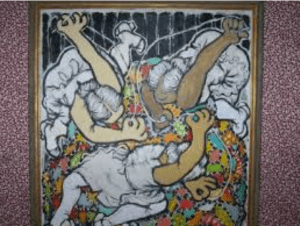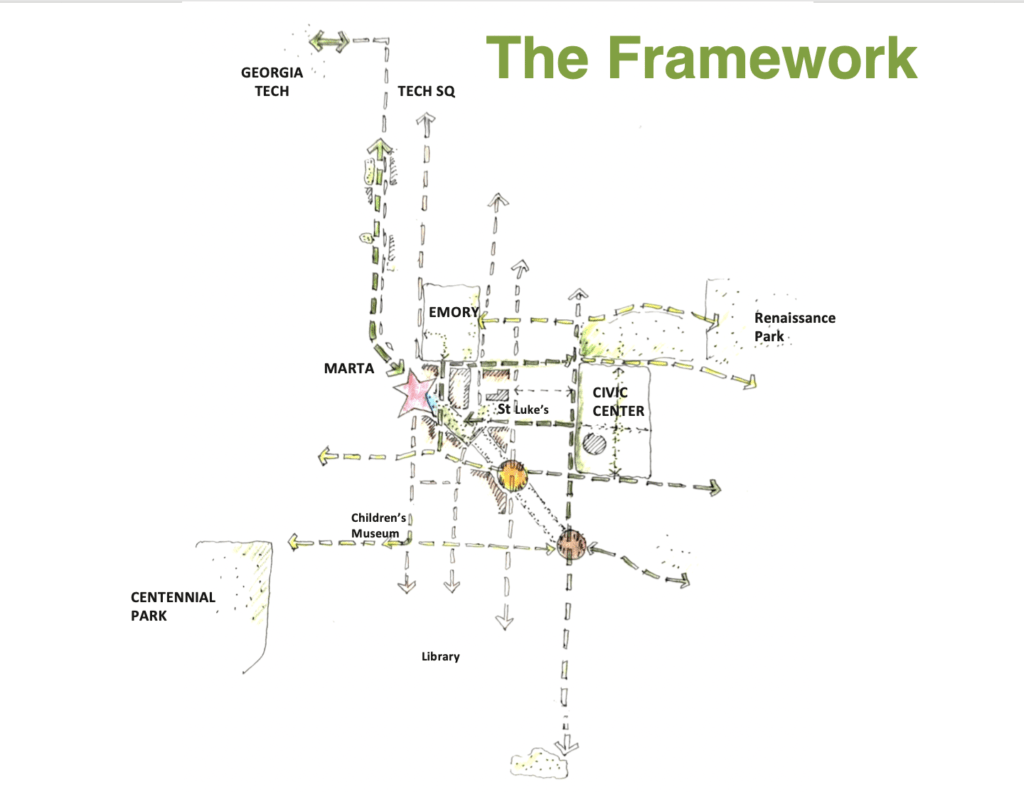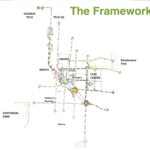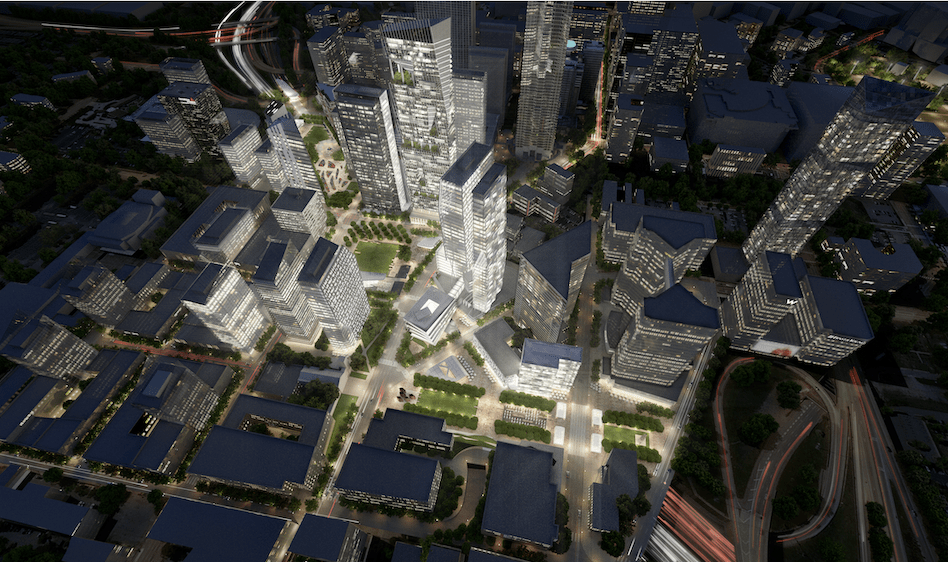Top Story
Date: February 24 – March 1, 2019
Location: Atlanta, Georgia
Sponsor: Central Atlanta Progress, Atlanta Downtown Improvement District, The JPB Foundation, the National Recreation and Park Association, the 10-Minute Walk Campaign, and The Trust For Public Land
Subject Area:Infrastructure, Parks and Open Space – 10 Minute Walk Campaign
Panel Chair:James Lima, President, James Lima Planning + Development, New York, NY
Background and Panel Assignment
“The Stitch” is a concept to build a new ¾ mile long “lid” above the I-75/85 Downtown Connector, an Interstate that bisects Atlanta’s downtown, as a way to create open space in the heart of the city of Atlanta. Aptly named, this project intends to “stitch” this section of Downtown back together with new streets, buildings, and parks. The Stitch concept proposes to reclaim approximately 14 acres of new urban greenspace atop a new platform structure that would extend from the Civic Center MARTA Rail Station at West Peachtree Street all the way to Piedmont Avenue.
Downtown is a significant employment center of Atlanta, accommodating 28% of the city’s jobs, and the Stitch is envisioned to continue to spur employment in the commercial areas that surround it. The Stitch could serve as a new district and catalyst for bringing Midtown and downtown together, creating an outwardly welcoming urban place while positioning surrounding areas to better absorb growth through new development opportunities and partnerships.
Central Atlanta Progress’ Vision for the Stitch is…
- A place for Atlanta to unite. “Capping the Connector,” The Stitch will bridge Downtown to Midtown, East to West, North to South, a new architecture to our past.
- An elevated urban oasis with parks, paths, development sites and programmable spaces that engages our senses, our civic pride and our higher aspirations.
- A transformational project because it will weave together streets long ago cut off by the downtown Connector, creating a new urban fabric by “Capping the Connector.”
- An opportunity to elevate Atlanta’s worldwide reputation by wisely using existing resources and infrastructure above one of Atlanta’s busiest freeways, creating an icon for the city.
- A physical manifestation of the ideals of inclusion, unification, and access for everyone.
This Panel was sponsored, in part by the 10 Minute Walk Campaign through a partnership between the Urban Land Institute, The Trust for Public Land, and the National Recreation and Park Association. The 10 Minute Walk Campaign is a national movement promoting the bold idea that all people in urban American should live within a 10-minute walk to a high-quality park.
The ULI panel was charged with addressing the following strategic themes regarding the Stitch:
Project Visioning, Positioning and Funding: The Atlanta Downtown Improvement District, Inc. funded all of the predevelopment work to date. The sponsor needs to get other stakeholders engaged and committed. Key questions were around what lessons can be learning from other highway capping projects and thinking broadly about the role of other “Stitch” stakeholders.
Development: Real estate development impacts of the “Stitch” will be significant. The panel addressed what degree of influence and control of the related development is appropriate including potential land use policies and the optimal role for the panel sponsor.
Design: A next big step is beginning a programming and design process that builds on the conceptual vision plan. The panel was asked what experience and key competencies should we be looking for in a design partner and/or team.
Summary of Recommendations
After engaging in briefings from the sponsor committee; a tour of the study area; more than 70 stakeholder interviews; and an analysis of the site’s existing conditions; the panel came up with the following key strategic recommendations addressing the Sponsor’s questions:
- Honor Your Story. Panelists acknowledged that, although they interviewed a large variety of stakeholders, some key voices were missing – including residential populations of downtown and nearby neighborhoods, several local churches, local businesses, representatives of the School district, and others. Panelists encouraged the sponsor to use the opportunity of the Stitch to reveal the lost history of downtown Atlanta and to craft a compelling story to enhance the Stitch’s relevance for all Atlantans. Steps should be taken by engaging with local historians, showcasing neighborhood identity, using art to tell stories – all of which will, ultimately make the city more equitable and work to achieve the vision for the Stitch to be inclusive, to unify, and to be accessible for everyone.

Atlanta native James Malone’s body of work. This painting and a series of his work captures the essence of Buttermilk Bottom Community and embodying the nuances of the African-American experience.
https://patch.com/georgia/cascade/malone-captures-essence-of-buttermilk-bottom-community
- Scale the Stitch. As proposed, the Stitch is incredibly ambitious in its scope. After conducting an analysis that included evaluating the economics, land use context, history, national precedents, and financial feasibility, panelists were unconvinced that a project of this size would ultimately reap the greatest benefits for the greatest amount of people in downtown Atlanta. Instead, panelists recommended phasing the project by focusing on Blocks 3 and 4. Reducing the overall footprint of The Stitch articulates more ‘bite-sized’ approach, and results on creating an open space that is roughly five acres in size – scaled similarly to that of Klyde Warren Park in Dallas, Texas. Scaling the project relative to assets, costs, and impact will create a smaller funding gap, which could be addressed with the help of Foundations, the City of Atlanta, the State of Georgia, and private donors. Scaling the Stitch will also reduce overall challenges relating to engineering considerations, traffic disruption, as well as operating and program costs.

A key recommendation from the panel is to concentrate on creating a space that is connected to existing transit at Marta and fills a gap in providing parks to areas that are most impacted by lack of access. This framework image demonstrates an approach to concentrate infrastructure investment at Marta and enhance surrounding transit connections to area institutions and open spaces.
- Align Implementation Actions. Currently, The Stitch remains an exercise in visioning. In order to move the project forward, it will be imperative to align efforts relating to governance, funding, and development. In particular, studies have demonstrated a value premium for properties located near a high-quality park or transit station. Framing the Stitch as a transportation investment can unlock additional public funding opportunities – but doing so effectively will require additional political and community support.
- Formalize Partnerships in order to Implement. It will be imperative to formulate new partnership in order to promote The Stitch. Panelists recommended taking active steps to create formalized partnerships around the following areas:
- Housing. In order to create inclusive communities and permanent affordability around The Stitch, the sponsor must formally engage the Atlanta Land Trust, the Atlanta Housing Authority, Foundations, Community Development Financial Institutions, HouseATL, nonprofit developers, and others.
- Homelessness. Formalizing new cross-sector partnerships can address the needs of the unhoused population of Downtown Atlanta. Key partners include St. Luke’s Episcopal Church, the Atlanta Parks Department, the Woodruff Foundation, Emory University Hospital, House ATL, and other nonprofit developers and services.
- Transportation. Securing funding for The Stitch will require adding the project to the Atlanta Regional Commission’s long-range Regional Transportation Plan. Emphasize the Stitch as cycling and greenway expansion, as well as a transit-oriented development opportunity, will help move this process forward.
- Wellness. Panelists suggested a concept to create an “Emory Health District,” which would be an opportunity for integrating education, research, and patient care with the park’s community health vision, and help create attainable housing for area workers.
- Next Steps. The Stitch is a bold project, and moving from idea to reality will require ambitious action. Understanding this, panelists recommended several action items that the sponsor can engage in immediately to maintain momentum. These include:
- Commit to an equitable and inclusive community anchor by the Stitch.
- Engage, collaborate, and align stakeholders by formalizing a diverse Advisory Committee, hiring a designated Engagement Coordinator, developing a communications strategy, and establishing a new 501(c)3 non-profit to design, develop, and operate the Stitch.
- Empower leadership in order to drive governance.
- Begin the pre-development phase, including beginning a campaign for the initial $10million investment; testing support from funders for an equitable community-driven approach; beginning preliminary engineering and design; obtaining permission to use freeway and airspace right-of-way through the federal and state approval process, and initiating the environmental review process.
- Review and clarify zoning and design an eye towards The Stitch by enforcing design standards that prioritize the public realm framed by high quality buildings that respect the human scale, and by future-proofing parking garages for adaptive reuse.

